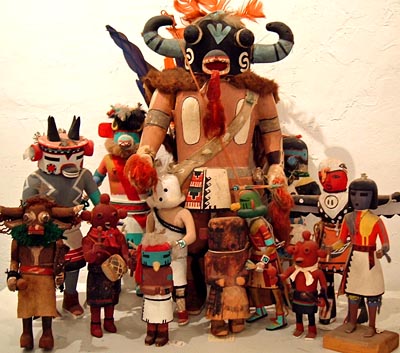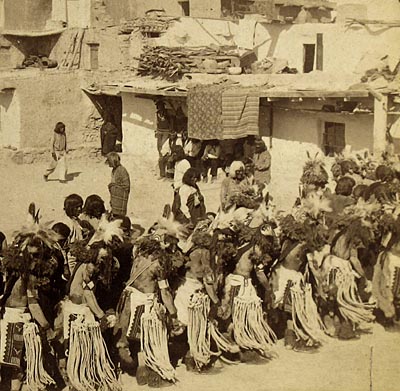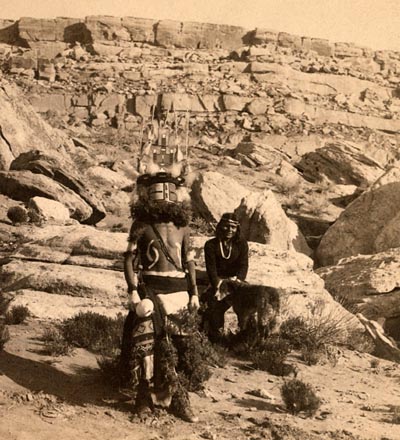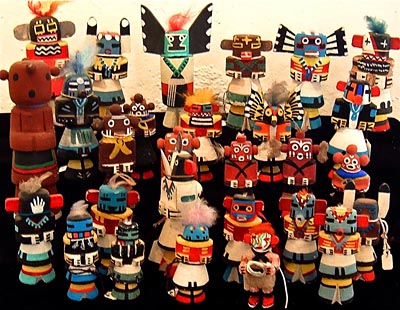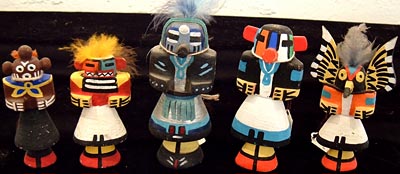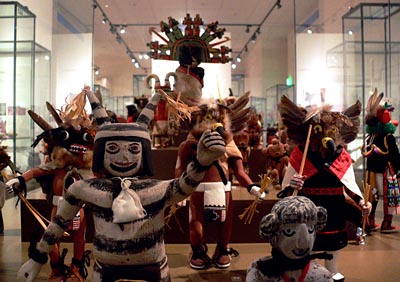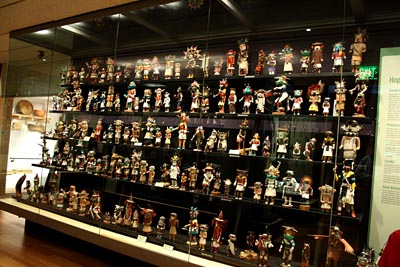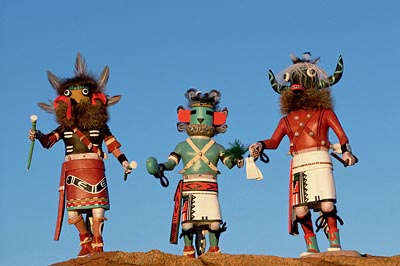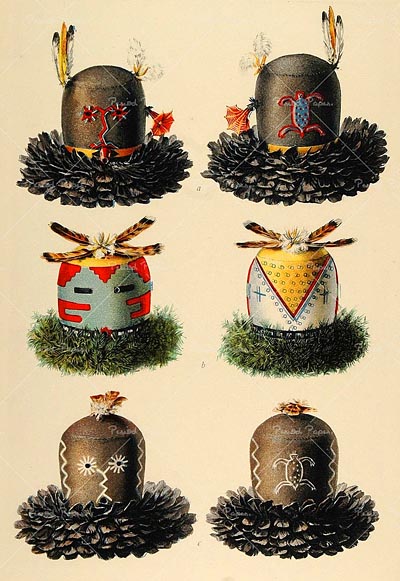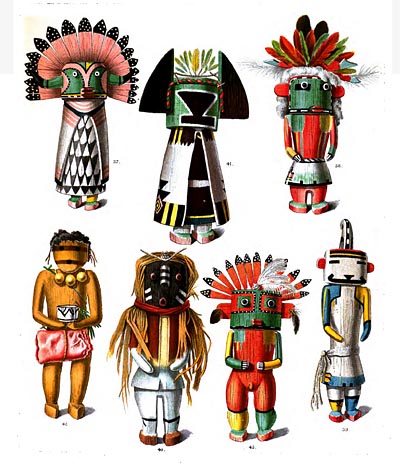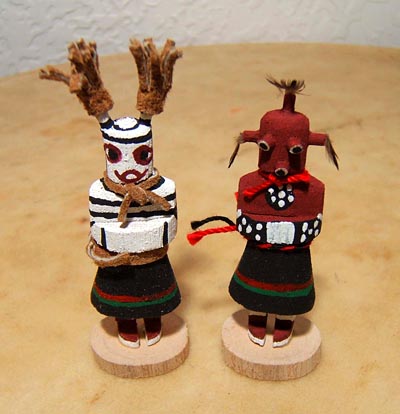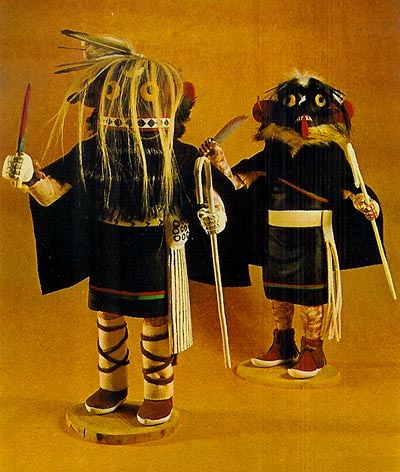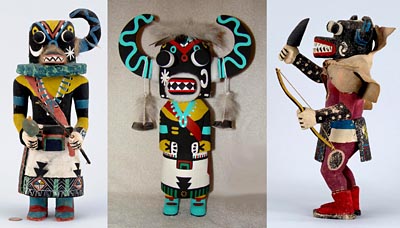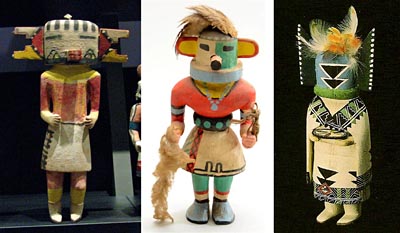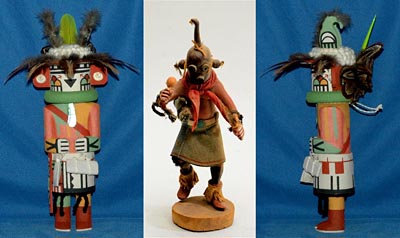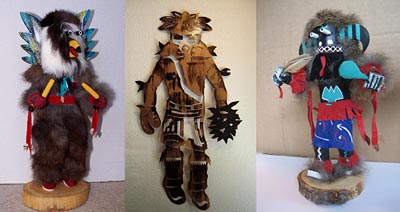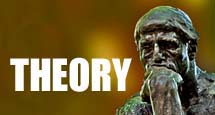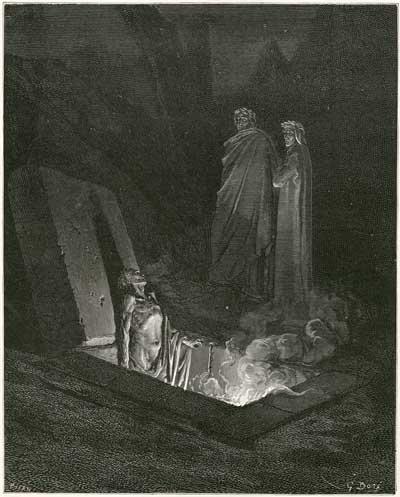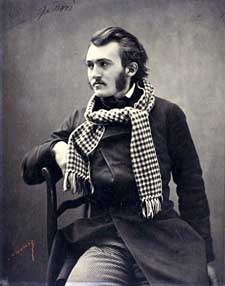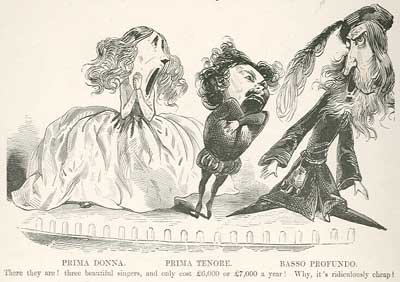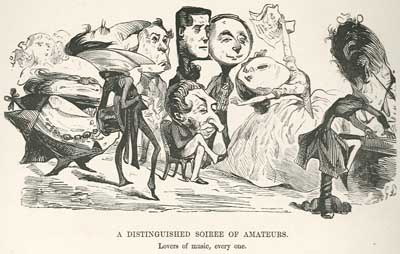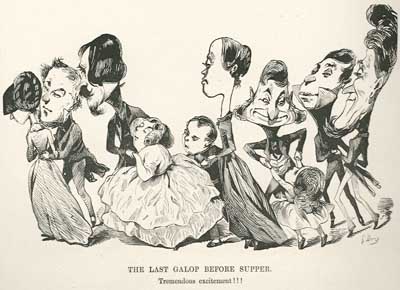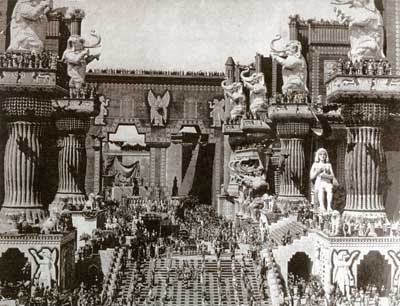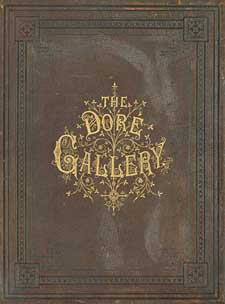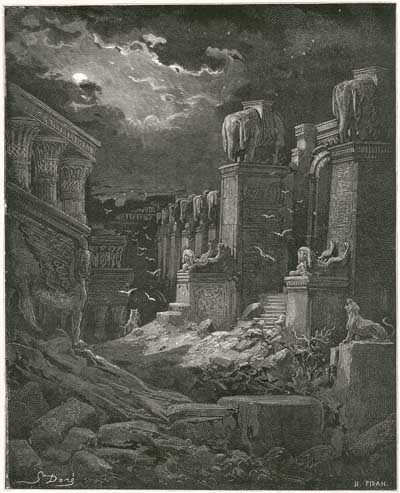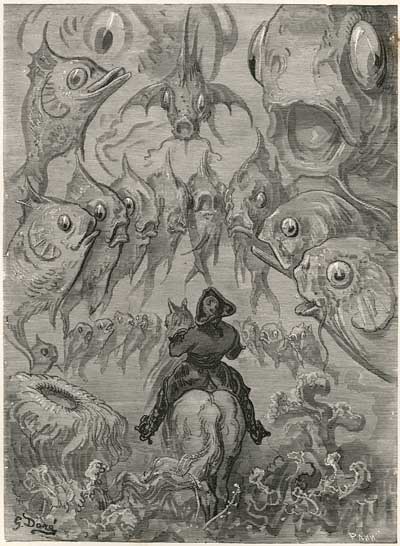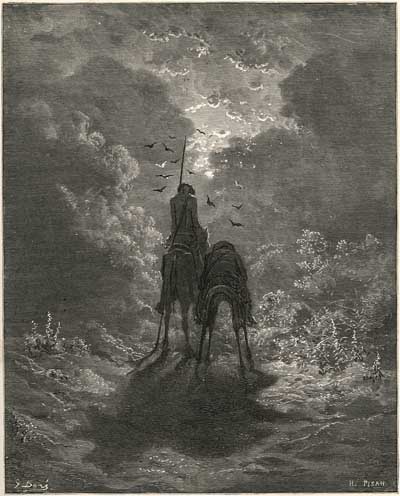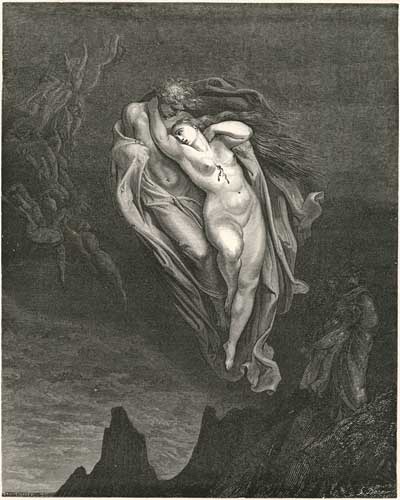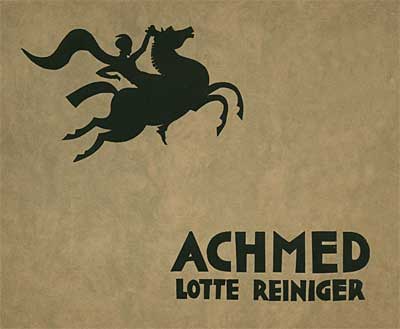
If you ask the average person what the first feature-length animated film was, just about everyone will answer Walt Disney’s “Snow White & the Seven Dwarfs”. But Disney’s film wasn’t the first animated feature by a longshot. Arguably, that honor belongs to
Lotte Reiniger’s “Adventures of Prince Achmed”.
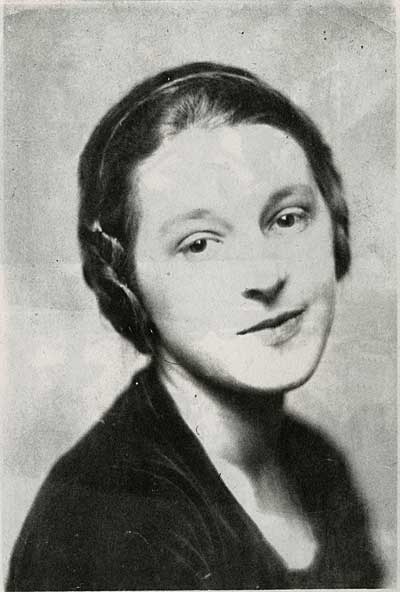
In 1923, Reiniger and her husband and business partner, Carl Koch began work on an ambitious project… a feature length silhouette puppet film based on “The One Thousand and One Nights”. She worked with animator Bertold Bartosch and background artist Walter Ruttman for three years on the film. The paper cutouts were jointed using wires and delicately arranged on top of a lightbox, where it was photographed frame by frame. Reiniger continued to animate her distinctive silhouette films up into the mid-1970s. She passed away in 1981.
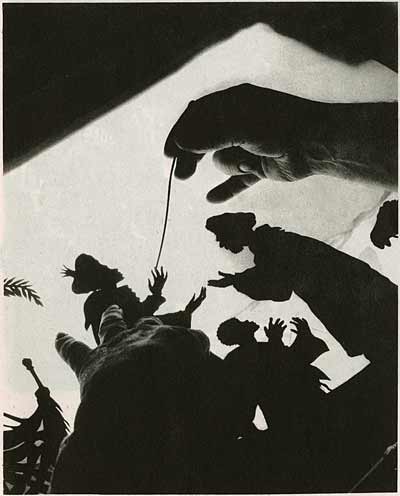
Animation Resources volunteer, Eric Graf was perusing a local library book sale when he spotted an amazing find… a portfolio of prints from Reiniger’s landmark film. Published in Berlin in the year the film was released (1926), this group of images shows just how beautiful Reiniger’s work was… and how unique. Eric picked up the book for the collection and brought it by today. Thanks, Eric!
Our reader, Michael generously translated the synopsis for us…
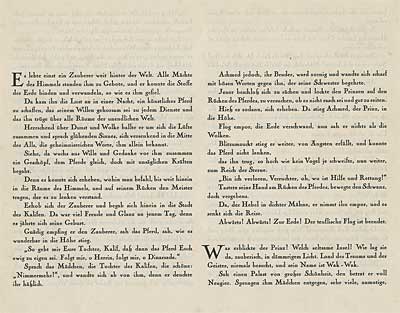
Once upon a time there was a wizard who could control all the powers and elements of the world. One day, he made a mighty flying steed out of pure will and thought. Then he took it to the caliph’s palace and asked him to let him marry his daughter in exchange for the horse. The girl refused (she thought he was ugly), so the plan was dismissed, but her brother, Achmed, got angry and insulted the wizard. So the latter set up a trap for him: He offered him to have a ride on the horse to see how fast and strong it was. But as soon as he was in the saddle, the horse flew up into the sky and far away. Achmed managed at last to make it land on an island. There he found many beautiful women asking him to be their lover, but he denied as he wanted to find their queen, who – as he had heard – was a woman of exceptional beauty.
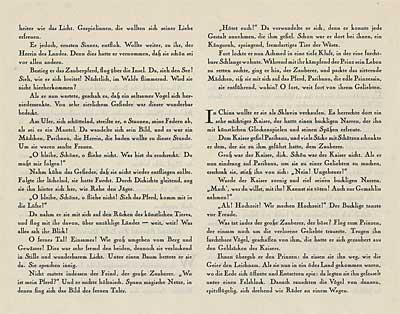
Achmed flew over the island on the magic horse and saw a lake shimmering in the night. While he was waiting there, a bird with beautiful feathers landed nearby and changed shape before his eyes: It transformed into Paribanu, the queen of the island, and she wanted to bathe there; around her were many gentle women. Achmed asked her to stay with him, but she was frightened and tried to flee; he, however, held on to her feathers and followed her through the thicket like the hunter follows the deer. He asked her to flee no longer and sat her onto the horse with him. Then they flew over numberless countries, until at last they found a lonely valley, where Achmed made a bed for her under a tree.
But in the meantime, the wizard was not idle, searching for his horse with magic webs, in which he caught the picture of the faraway valley. Then he transformed into a kangaroo, that strange jumping animal of the desert, and in the next moment he was with Achmed and Paribandu. He lured Achmed into a deep canyon, in which a horrible snake lived. While Achmed was fighting that snake, trying to save his life, the wizard kidnapped the girl and escaped with the flying horse.
In China he wanted to sell her as a slave. A very powerful emperor lived there; he had a hump-backed jester, who amused him with his pranks and his chimes. The emperor liked Paribandu and gave many sacks of treasures to the wizards for her. Big was the emperor, and fat. Beautiful he was not. When he approached Paribandu and wanted to make her his lover, she pushed him away, crying: “No, you monster!” That made the emperor angry, so he called his jester and told him: “Do with her what you want! You can kill her, but you may also take her as your wife if you want!” “Ah, marriage! We make marriage!” the hump-backed one called out and danced with joy.
Meanwhile, the wizard was flying back to the island on birds that he had made out of the sacks of gold from the emperor. On the island, Achmed was mourning the loss of his lover, but the wizard gave Achmed to those birds: They tore him away like vultures tear a corpse away. When they found a wasteland where the earth was gaping and spewing out horror, they layed him down shackled under a big rock.
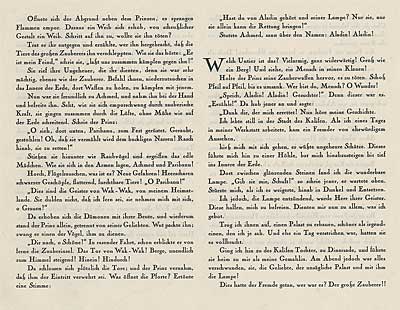
A flaming abyss opened next to Prince Achmed. A hideous woman rose out of it and stepped towards him. Was she going to kill him? He walked up to her and told her who had brought him there, and that the great wizard’s animals had kidnapped him. When she heard that, she shouted: “He is my enemy, let us fight him together!” She called the monsters that served her, for she was very powerful, as powerful as the wizard. She ordered them to dive into the core of the earth and fetch weapons with which they could fight the wizard. Now she was friendly to Achmed, took him by the hand and freed him. Look how they soared through magic might, walking through the air with ease, as if they were walking on level ground. The prince shouted: “O look, down there is Paribanu, dressed for a celebration. Oh, she is going to be married with that hunch-backed jester! Let’s go down there quickly and save her!”
Down they swooped like birds of prey, grabbing that noble girl. How they lay in each other’s arms, Paribanu and Achmed!
But listen! The beating of wings, what does it mean? New dangers! Hosts of black creatures, horrible animals with flapping wings! “O Paribanu!” “These are the spirits of Wak-Wak, my home country. They will not tolerate my staying away from home, they will take me with them! O, the horror!” So the demons took to the air with their prey, and again Prince Achmed stood there alone, separated from his lover. He was furious, and in his anger he forced one of the birds to serve him. Racing after Paribanu, he saw the magic island from far away. The gate of Wak-Wak, and next to it endlessly high mountains. He flew into the gate, and through it.
Then, suddenly, the gates closed, and a voice told the Prince that he was not allowed to enter. “Have you heard of Aladin and his lamp,” the voice said,
“only that lamp can be your salvation!” Achmed stopped short, trying to recall what he knw about that name: Aladdin! Aladdin!
What monster is this? Many-armed, abominable! Big as a mountain! And look, there is a man in its claws! The prince took his magic weapons to kill it. He shot arrow after arrow, until it dropped dead. He asked the man who he was. It was Aladin, the man he was looking for! He told Achmed his story: “I used to live a quiet life in the caliph’s city. While I was working in my workshop one day, a stranger of noble appearance came in and asked me to follow him to a place where immense treasures could be found. He lead me to a cave and bade me descend to the depths of the earth. There, between shiny stones, I found the marvelous lamp. “Give it to me, scoundrel!” the stranger shouted; he was waiting at the cave’s entrance. When I refused, he left me behind in darkness and desparation. But I, lighting the lamp, became the master of its spirits. They helped me escape. They served me and did whatever I ordered them to do. I gave them the order to build a palace, more beautiful than any palace I had seen before. And before the sun set, they had accomplished that feat. I went to the caliph’s daughter and led her home with me as my wife. But in the evening, everything had disappeared – she, the lover, as well as the incredible palace and, with it, the lamp.
The stranger had done that, but who was he? The great wizard!
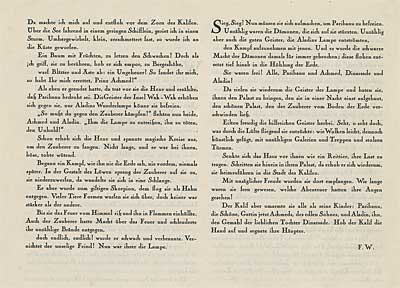
“So I got up and fled the caliph’s wrath. Travelling over the sea in a tiny boat, i got into a storm. I was whirled around, I was almost smashed against rocks, then I was thrown on the coast. I saw a tree with fruit that could help me recover. But as I reached out for it, the tree rose to the height of a mountain and threw off branches and leaves: It was a monster! That was when you found me, Prince Achmed, and when you saved me!”
When Aladdin had finished his story, the witch appeared and told them that Paribanu was in danger. She said that the spirits of Wak-Wak were revolting against her and only Aladin’s lamp could save her. “So you must fight the wizard!” both Aladdin and Achmed begged her, “wrench the lamp from his hands and kill him, the villain!” Already the witch got up and wove magic circles in order to catch the wizard. Not before long he was with them, angry and raging.
Now began a fight like the earth has never seen one, never before and never after it. In a lion’s shape, the wizard jumped at the witch in order to pin her on the ground, but she turned into a snake. He, however, took the shape of a poisonous scorpion, which she countered by changing into a rooster. Many shapes they turned into, but neither of them was stronger than the other. Until at last, the witch tore the fire down from the skies, engulfing the wizard in flames. He, too, had power over the flames, and threw many a fire towards her, but finally, finally he got weak and burned. The villainous enemy was destroyed! Now the lamp belonged to them.
Victory, victory! Now they had to hurry to Paribanu’s rescue. Numberless were the demons that attacked them. But numberless were also the good spirits that came streaming out of Aladdin’s lamp to fight them. And so the black power of the demons was broken forever that day, they fled desperately to the recesses of the earth. They were free now, all of them: Paribanu and Achmed, Dinarsade and Aladdin!
Once more they summoned the lamp’s spirits and bade them carry them to the palace they had built in one night and that the wizard had whisked away from the ground. Happily the spirits obliged. Look what made them so glad, while it was flying through the air, light as a cloud, but still artfully created, with numberless galleries and stairs and proud towers. In front of them the house landed like an animal that was meant to carry their burden. They entered the palace, and it flew up again to bring them back to the caliph’s city. There, they were greeted with measureless joy. How long they had been away, and what adventures their eyes had seen!
But the caliph embraced them all as his children, Paribanu the beautiful, who was now the wife of Achmed, the noble son, and Aladdin, his lovely daughter Dinarsade’s husband. The caliph lifted his hands and blessed them all.
THE PLATES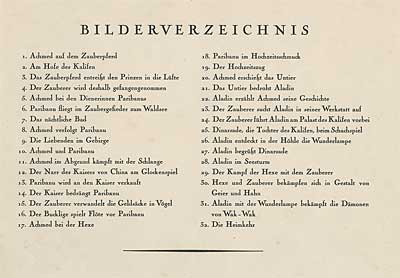
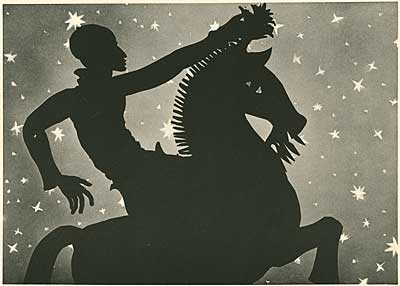 1. Achmed on the magic horse
1. Achmed on the magic horse
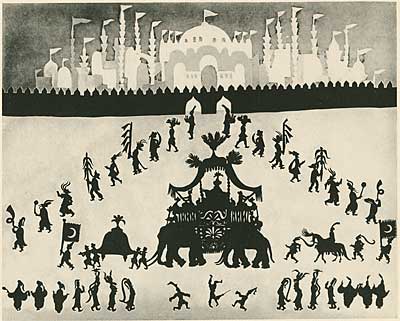
2. At the caliph’s court
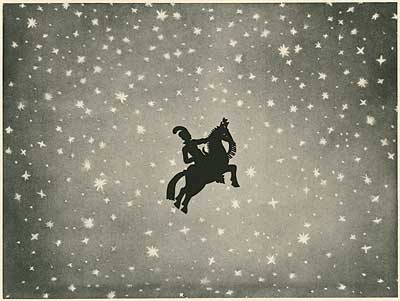
3. The magic horse takes Achmed into the air with it…
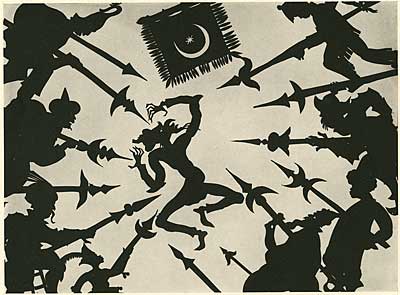
4. …so the wizard is taken prisoner
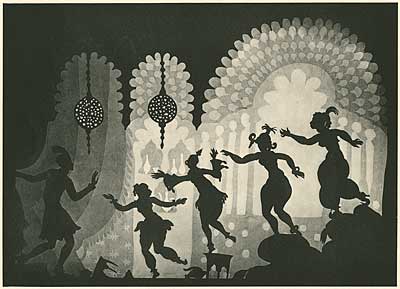
5. Achmed with Paribanu’s servants
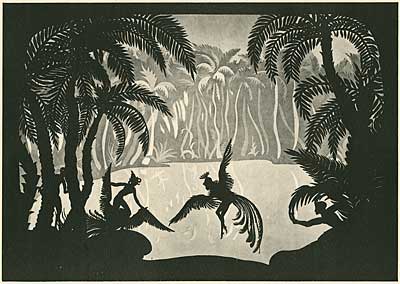
6. Paribanu flying to the forest lake in her feathery costume
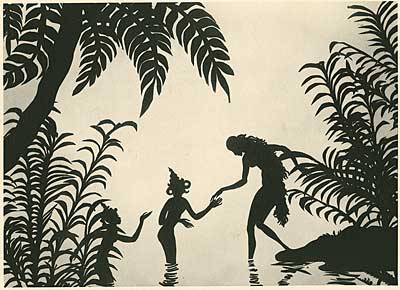
7. Her nightly bath
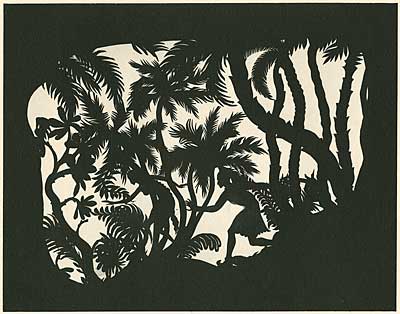
8. Achmed following Paribanu
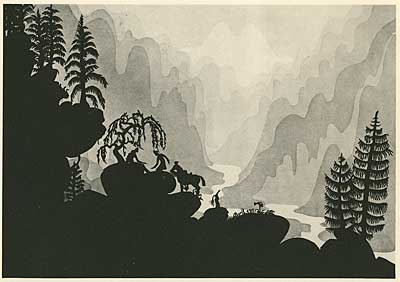
9. The lovers in the mountains
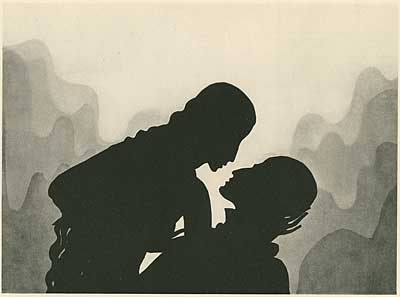
10. Achmed and Paribanu
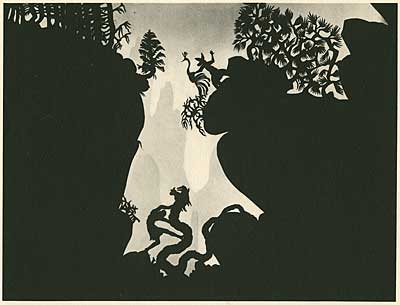
11. Achmed fighting with the snake in the canyon
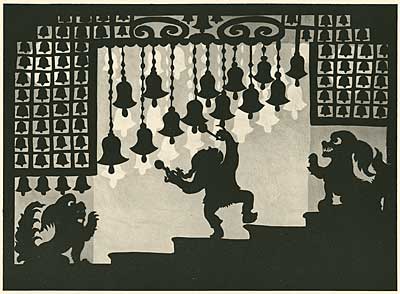
12. The emperor of China’s jester playing the chimes
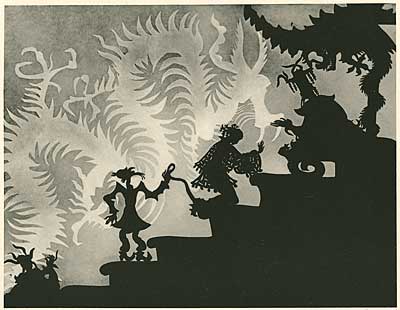
13. Paribanu is sold to the emperor
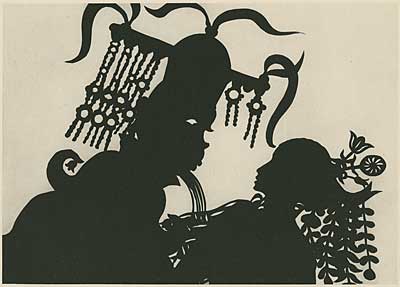
14. The emperor pressing Paribanu
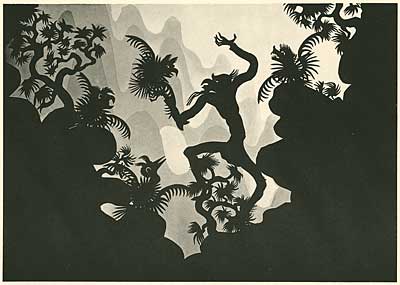
15. The wizard turns the sacks of gold into birds
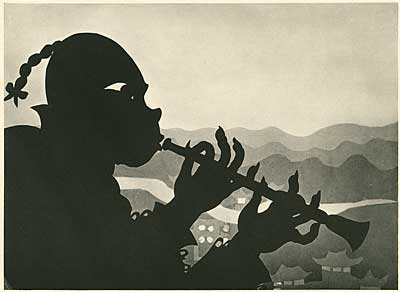
16. The hunchback plays the flute for Paribanu
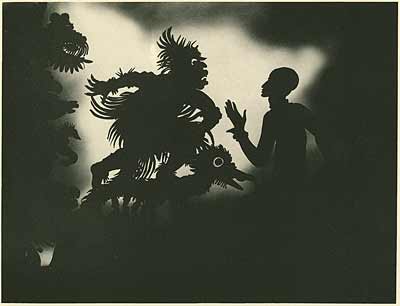
17. Achmed with the witch
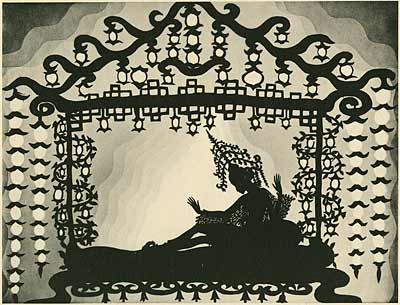
18. Paribanu in her wedding attire
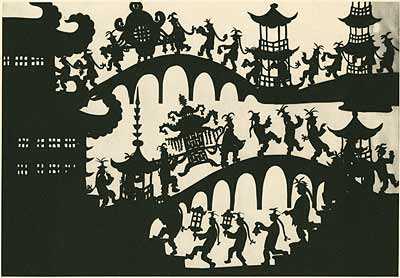
19. The wedding procession
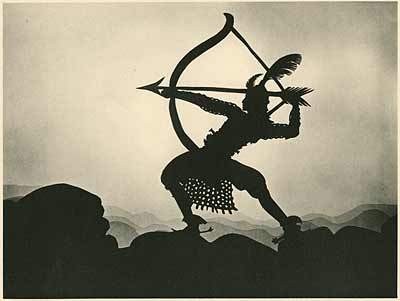
20. Achmed shooting the monster
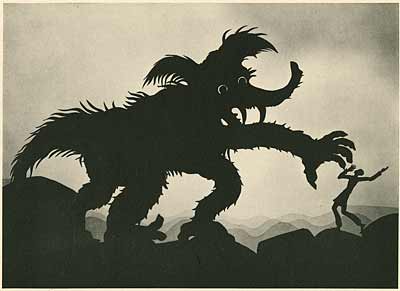
21. The monster threatening Aladdin
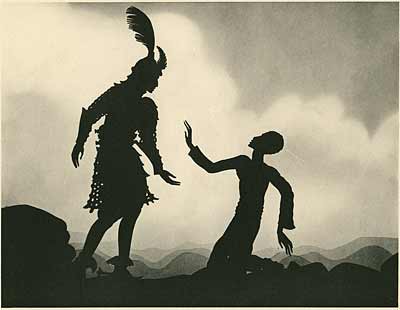
22. Aladdin tells Achmed his story
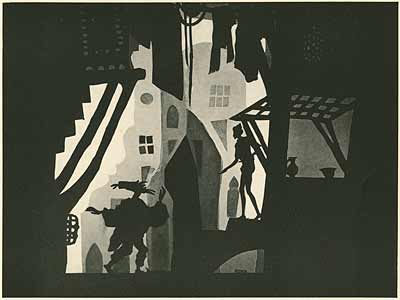
23. The wizard calls on Aladdin in his workshop
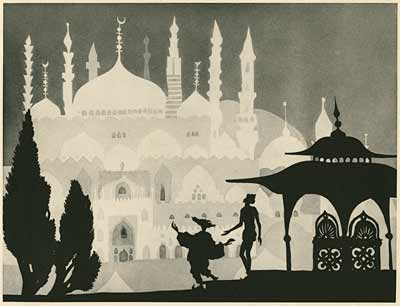
24. The wizard leads Aladdin past the caliph’s palace
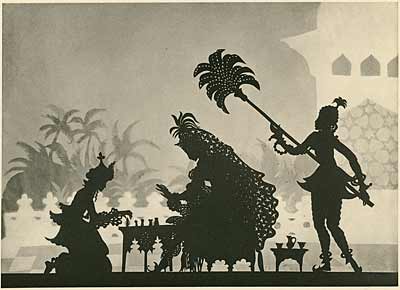
25. Dinarsade, the caliph’s daughter, playing chess
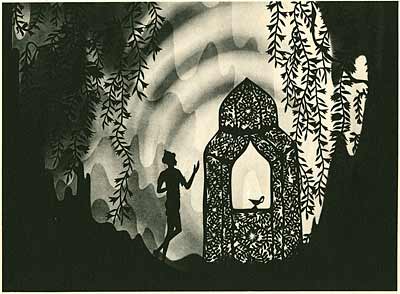
26. Aladdin discovers the magic lamp in the cave
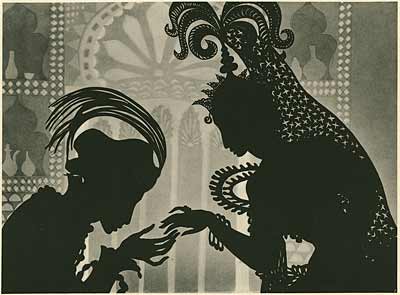
27. Aladdin greets Dinarsade
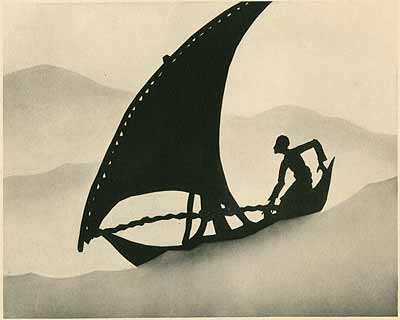
28. Aladdin at sea in the storm
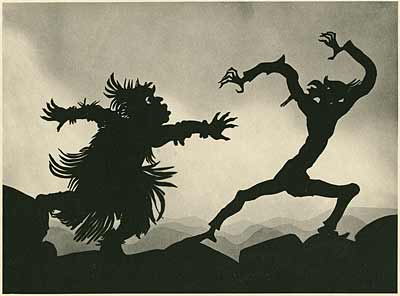
29. The battle between the witch and the wizard
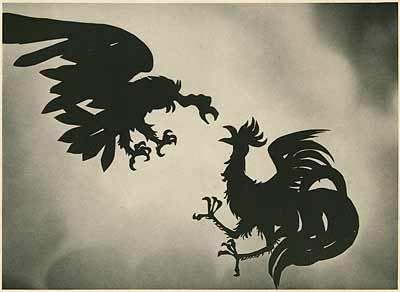
30. The wizard and the witch fighting in the shape of a vulture and a rooster
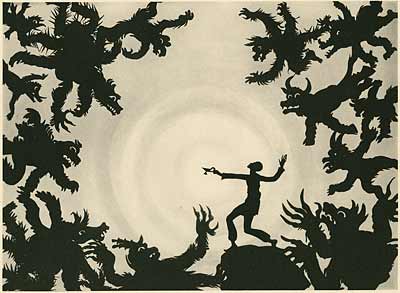
31. Aladdin fights the demons of Wak-Wak with his magic lamp
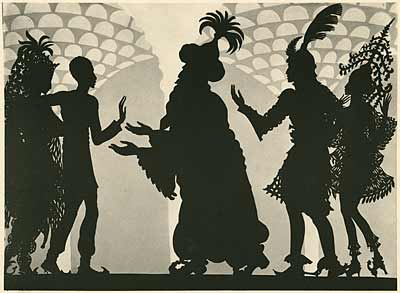
32. The homecoming
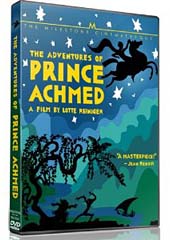

This important film is available at Amazon… The Adventures of Prince Achmed
Stephen Worth
Director
Animation Resources


This posting is part of the online Encyclopedia of Cartooning under the subject heading, Animation.









 by
by 
